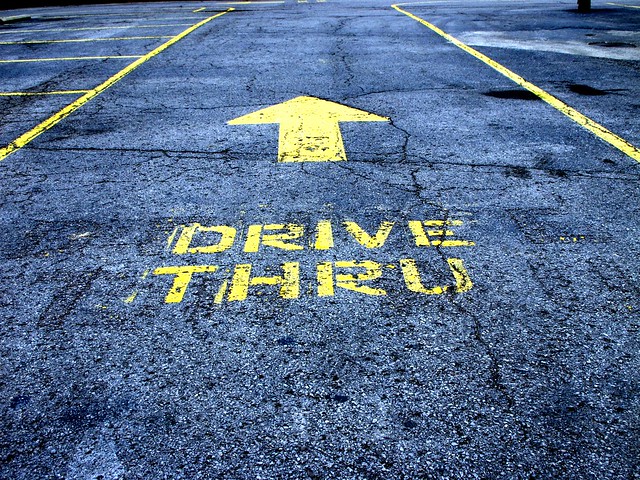
In the endless winter of 2019, it’s not uncommon to see the drive-thru lines at fast food joints snaking all the way around the building, tailpipes spewing clouds of exhaust.
The drive-thru is one way our car culture seduces us into choosing convenience over our own best interests – saving gas, interacting with our fellow humans, even saving a little time.
And yet, polls show Americans are realizing that the extreme weather we’ve been experiencing is the result of climate change, and that climate change is the result of human activity. According to a recent survey, 64 percent of Americans believe the government should be doing more to address it.
Unfortunately, Donald Trump withdrew the United States from the Paris Climate Agreement and appointed a former coal industry lobbyist to head the EPA. From the moment he took office, Trump worked to roll back Obama-era anti-pollution regulations.
The government is not going to save us from the accelerating pace of climate change. Not just yet, anyway.
Far from hopeless, this situation presents an opportunity. The poet, farmer, and essayist Wendall Berry once wrote that our “earth is probably suffering more from many small abuses than from a few large ones.”
Car culture seduces us into choosing convenience over our own best interests.
The act of sitting in an idling vehicle at the drive-thru, something that a majority of fast food customers do on a regular basis, is one such “small” abuse. Many people seem to believe that because a vehicle is not moving, it is not causing pollution. Or maybe they think it’s causing less pollution, but that is simply not the case.
According to an article in the Earth Island Journal, the average drive-thru wait time, from order to pick-up, is three minutes per car. “This translates to nearly 20 grams of pollutants emitted per car, on average, per visit – about the same as driving for a mile and a half,” wrote Spencer Fleury, the article’s author.
At peak times, your wait is likely to be longer than three minutes. Say you wait ten minutes. That’s more than 60 grams of pollutants spewed into the atmosphere, when it might actually take less time to just park and walk inside.
When you multiply that times the number of drive-thrus, the result’s pretty staggering. In 2017, there were 14,027 McDonald’s in the US alone. A 2016 study in the Journal of Civil and Environmental Engineering reported that drive-thru customers make up more than 60% of McDonald’s revenues. That’s just McDonald’s. Wendy’s, Burger King, and Taco Bell have similar percentages of drive-thru versus drop-in customers.
Beyond the straightforward math, there’s another reason for giving up the drive-thru. By not using it, you demonstrate that you understand the relationship between your actions and the crisis our planet currently faces. If enough of us took this step, real change, in the form of an improved relationship between people and the Earth we inhabit, would not be far behind.
By Rose Both, Chapter Executive Committee Member.
Photo by frankieleon.